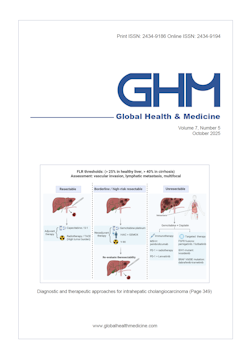Global Health & Medicine 2025;7(5):376-383.
Molecular epidemiology of drug-resistant tuberculosis in Jiangxi Province, China, 2022–2023
Mao ZQ, Zheng HL, Liu ZQ, Li ZH, Zhang QL
Drug-resistant tuberculosis (DR-TB) poses a critical public health challenge in Jiangxi Province, China, where regional resistance patterns remain understudied. This retrospective study analyzed 9,041 suspected TB patients (2022–2023), identifying 3,104 Mycobacterium tuberculosis (M. tuberculosis) cases via PCR-reverse blot hybridization assay (PCR-REBA). Among M. tuberculosis-positive cases, 19.3% exhibited drug resistance, including mono- (9.2%), double- (4.6%), triple- (3.8%), and quadruple-drug resistance (1.7%). Males had higher odds of rifampicin (OR = 1.407, 95% CI: 1.086-1.824, p = 0.01) and isoniazid (OR = 1.959, 95% CI: 1.538-2.495, p < 0.001) resistance. Dominant mutations included rpoB Ser531Leu (32.1%) for rifampicin and katG Ser315Thr (53.6%) for isoniazid resistance. Extrapulmonary TB showed higher susceptibility than pulmonary TB (e.g., rifampicin: 93.47% vs. 87.25%, p = 0.002). These findings highlight the urgent need for rapid molecular diagnostics and targeted interventions in Jiangxi to address distinct DR-TB patterns and demographic disparities.
DOI: 10.35772/ghm.2025.01065







